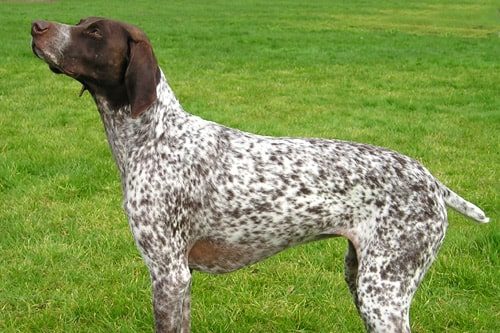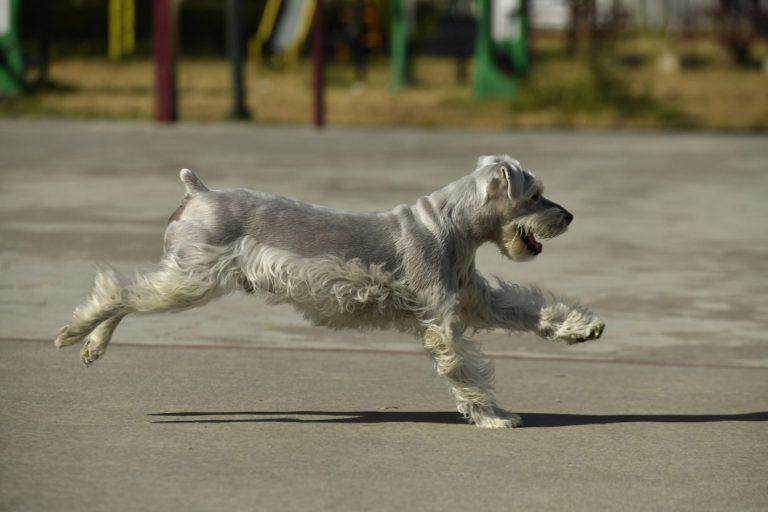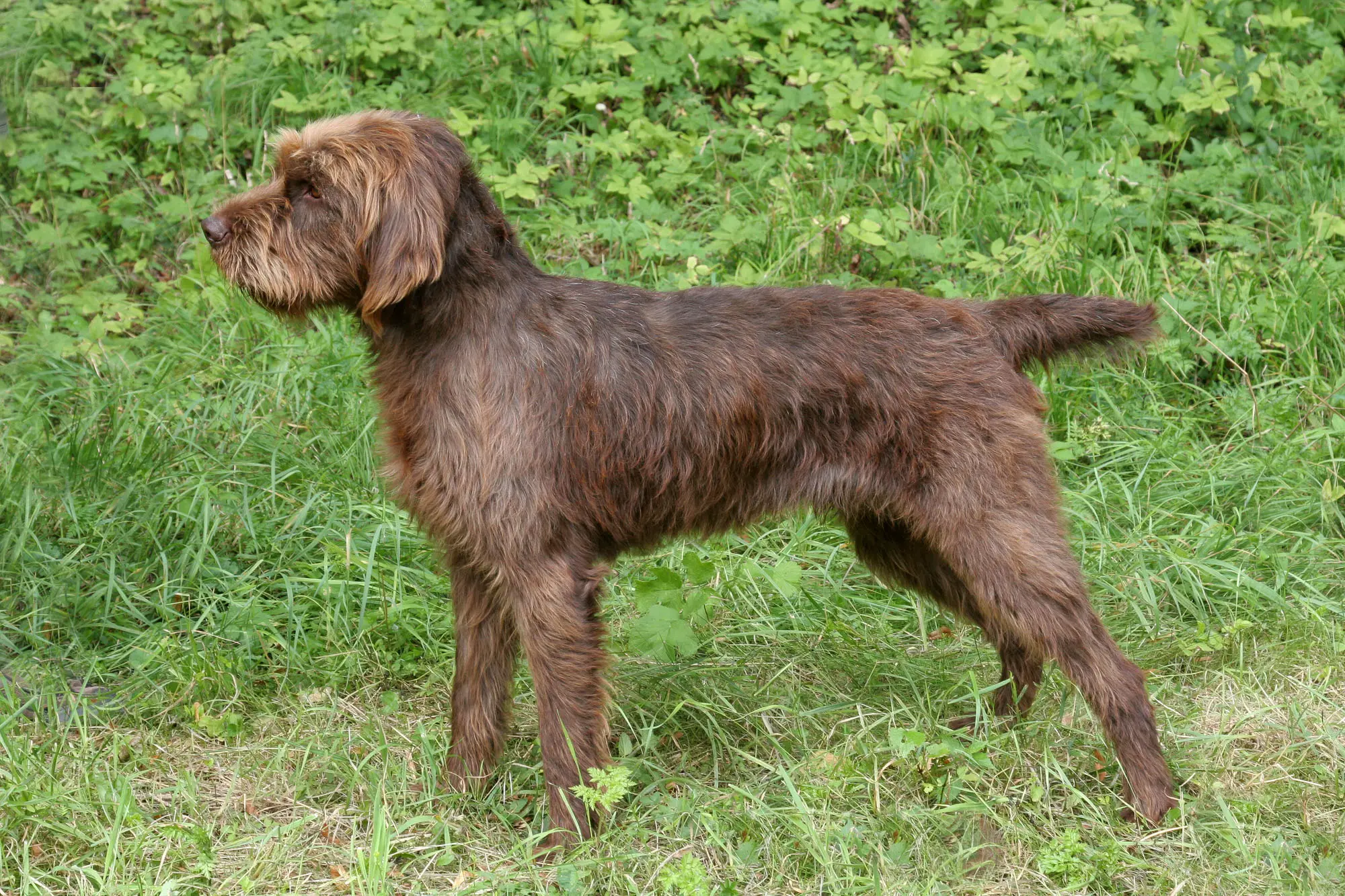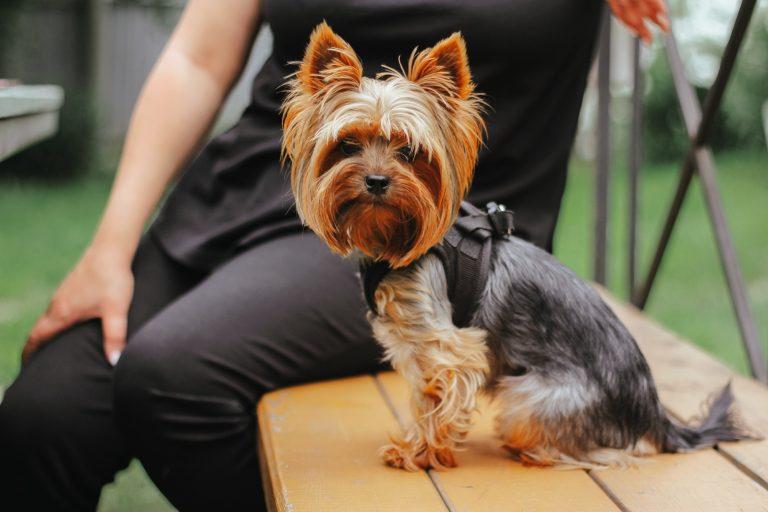German Shorthaired Pointer: They Do Just About Everything
Meet the German Shorthaired Pointer
 I am looking for a dog that excels in everything hunting. Maybe you are not a hunter. Then how about an excellent watchdog and loyal family companion? The surprising German Shorthaired Pointer may be just the dog for you.
I am looking for a dog that excels in everything hunting. Maybe you are not a hunter. Then how about an excellent watchdog and loyal family companion? The surprising German Shorthaired Pointer may be just the dog for you.
The German Shorthaired Pointer is a medium-sized hunting dog, one of the top ten most popular dog breeds in the United States. This all-in-one dog excels in hunting birds, rabbits, raccoons, and other game animals and doubles as an excellent watchdog and loyal family pet. It is a high-energy dog so be prepared to get lots of workouts if you decide to own one.
History
The German Shorthaired Pointer (GSP), a medium- to large-sized pointing dog breed, was created in Germany in the 19th century for hunting. They are an adaptable hunting breed with solid legs and a sleek, robust build that makes them excellent for land and water.
The GSP is most likely descended from the German Bird Dog breed, connected to the Old Spanish Pointer brought to Germany in the 17th century. Generations of German hunters crossed many breeds until the GSP appeared in the 1800s. They succeeded wildly, ranking among the top breeds in competitive hunting competitions.
The English Pointer and the Arkwright Pointer, as well as many German hounds and tracking dogs, are likely contributors to the breed’s evolution. But because the first studbook was not started until 1870, it is hard to identify every dog that contributed to the development of this breed.
World War II hampered the breeding of GSP. As the war closed, many breeders secreted their money, jewels, GSPs, and other valuables. The best dogs were then transported to Yugoslavia for preservation. The GSP is now ranked 19th out of the 155 breeds and variations the AKC recognizes.
Inducted into the AKC
The American Kennel Club gave the Shorthair official recognition in 1935, and by 1938 the breed had grown in popularity in the Minnesota–Wisconsin region and into Michigan. The German Shorthaired Pointer Club of America, Inc. was given a charter.
They were tasked with defining the nature of the purebred canine breed they were formed to support and advance. Their initial standard, based on the original German standard but with a few minor changes, was formally accepted in May 1946.
German Shorthaired Pointer Appearance

The fur on a dog’s body should not feel soft to the touch except for the hair on its head and ears. A GSP’s coat is short but not thin. A GSP’s head is distinct from a Labrador or a Pointer’s in shape, and it has a more extended, somewhat larger ear that is not pointed at the end but is slightly rounded.
Some people frequently mistake the GSP for a Dalmatian because some of its coat patterns are dazzling white with tiny markings known as “ticking. They also resemble Labrador retrievers because of the solid liver or black varieties. The tail is docked to reduce field injuries; it shouldn’t be short like a Boxer or Doberman, but at least 6 to 8 inches long, with some being a little longer and the dewclaws removed.
The German Shorthaired Pointer’s coat is short, pretty evident from the name, making it easy to care for. It is dense, so it repels water and helps keep the dog warm in cold weather. German Shorthaired Pointer colors vary, including black, liver, black and white, liver and white, black roan, and liver roan.
German Shorthaired Pointers size is medium, between 55 and 70 pounds, and measures between 23 and 25 inches tall at the shoulder; females tend to be smaller.
They do shed, which means you will need to vacuum regularly. They are included in the AKC Sporting Group of dog breeds.
Care and Grooming
Like other active dogs, German Shorthaired Pointers need a lot of workouts and a big running area. They could get bored and disruptive if they don’t get enough attention. GSPs struggle if left alone all day or kept in a kennel with little to no human contact.
The dogs may need a lot of food. Older or less active GSPs can also develop obesity if they eat more than necessary for their activity level. A healthy weight should allow the dog to have a distinct waist or “tuck-up,” and you should be able to feel the last two ribs under the coat.
They are an immaculate breed. Very little care, simply occasional brushing, is required for the short GSP coat. They shed almost continually. GSPs should only take baths as necessary. Like all dogs with flop ears, GSPs are susceptible to ear infections, so examining and cleaning their ears is essential.
Where Do They Sleep?
The breed wants to interact with its owner and family, not to be a kennel or pack dog. A GSP that participates in family activities and receives enough exercise is a fantastic housedog. They must have a safe place to exercise or be taken on frequent runs where they may let off steam.
For several reasons, crate training is advised. Young puppies should ideally sleep in a secure, enclosed space like a crate due to their inquisitive nature and high activity level. If you don’t give an adult dog freedom in the house, it gives him a place to sleep. It also aids in housebreaking the puppy.
Older, more experienced canines who are proven and reliable housedogs may be permitted to sleep unrestrained.
German Shorthaired Pointer Temperament
 German Shorthaired Pointers do well with children, especially if they are socialized early (they mean both the dog and the kids). German Shorthaired Pointers make great family pets.
German Shorthaired Pointers do well with children, especially if they are socialized early (they mean both the dog and the kids). German Shorthaired Pointers make great family pets.
These dogs can live outdoors but prefer to live inside and go outside when necessary. According to Stanley Coren, in his book “The Intelligence of Dogs, ” they are above average in dog intelligence.
Although they are a hunting breed with a strong desire to discover and chase prey, they are also very spirited and are excellent in a range of dog sports. When properly socialized, they are amiable to both people and other dogs.
German Shorthaired Pointers are about 25 inches tall and weigh 40 to 60 pounds, depending on the sex of the dog.
Health Concerns
The breed’s lifespan is 10 to 12 years on average. Generally speaking, a hardy breed can expect to live for 13 years or longer. Some dogs, regarded as seniors at or around the age of 9, may need a change in food or degree of activity since they will continue to try to work like younger dogs.
Although German Shorthaired Pointers typically have good health, they might have specific medical issues. Cancer, lymphedema, entropion, von Willebrand’s disease, and gastric dilation-volvulus are a few examples.
Some GSPs are predisposed to hip dysplasia and epilepsy. As with any other hunting dog, contact with the game can cause the spread of fungi and bacteria that can quickly colonize the gums or cause infections on open wounds and minor cuts from scratching against plants and bushes during regular hunting trips.
Where to Buy a German Shorthaired Pointer
German Shorthaired Pointers are one of the most popular dog breeds. They are intelligent, affectionate, and excel at various activities, from hunting and tracking to agility and obedience. A German Shorthaired Pointer is ideal if you’re looking for a versatile and athletic companion. But where should you buy one?
There are a few things to remember when searching for a German Shorthaired Pointer. First, be sure to find a reputable breeder who can provide health clearances for the parents. This will help ensure that your puppy is healthy and free of genetic defects. Second, consider your lifestyle and activity level. German Shorthairs need plenty of workouts, so if you’re not active, this may not be the right breed. Finally, be prepared to spend some time training your new dog; German Shorthairs are intelligent but can also be willful if not properly trained.
With these things in mind, finding the perfect German Shorthaired Pointer should be a breeze. Check out local breeders or search online to find a reputable source for your new furry friend. German Shorthaired Pointers usually cost between $500 and $1000, but prices vary greatly depending on the dog’s pedigree.






